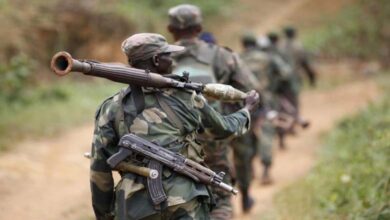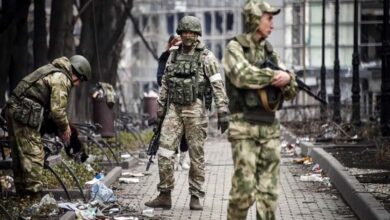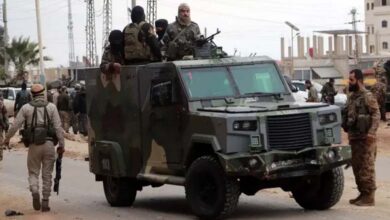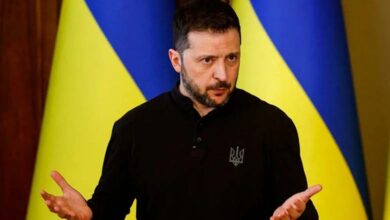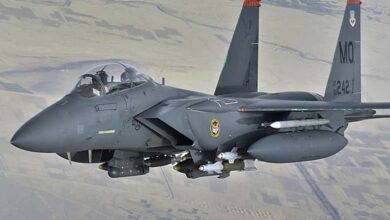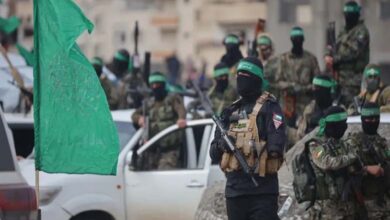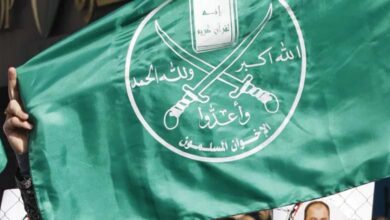The Pentagon is “powerless” against mysterious drones… Unchecked intrusions over a U.S. base
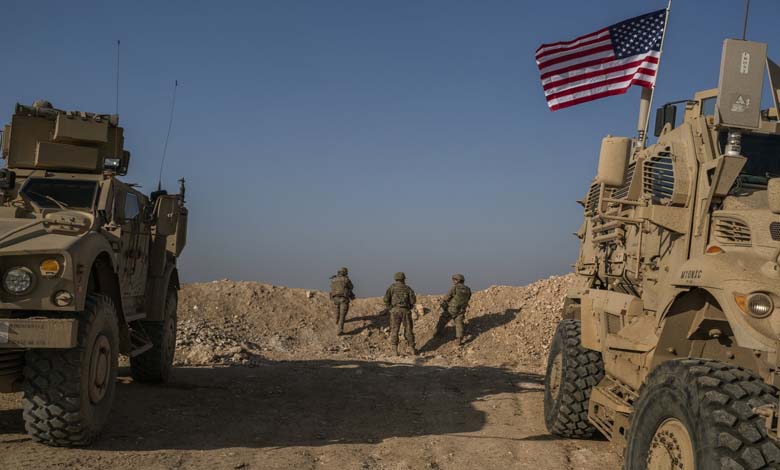
As drones become deadly warfare tools, a recent incident on U.S. soil has revealed a “dilemma” that Washington is struggling with.
-
Biden’s strategy to deter Iran’s proxies angers the Pentagon
-
Pentagon reveals nature of US forces targeted in Syria
The dilemma lies in how to defend against drones if they fly near military bases, as federal law prohibits the military from shooting them down unless they pose an imminent threat.
What happened recently?
According to The Wall Street Journal, U.S. military personnel reported over several nights a mysterious breach of restricted airspace over an area containing one of the largest clusters of national security facilities in the United States.
-
Pentagon denounces the Houthi attacks and continues to support Saudi Arabia
-
Saudi Arabia serves as key pillar of regional security, major US partner: Pentagon
The breach involved a suspicious fleet of unidentified drones flying over Langley Air Force Base on the Virginia coast in a display that lasted 17 days, usually beginning 45 minutes to an hour after sunset. Military commanders were puzzled over how to respond or identify these drones and where they came from.
General Mark Kelly, commander of the U.S. Air Force, estimated that the first drone, which began flying, was about 20 feet long and traveled at over 100 miles per hour at an altitude between 3,000 and 4,000 feet. It was followed by other drones, one after the other, which in the distance resembled a parade of lawn mowers.
-
40,000 U.S. Troops in the Middle East to Protect Israel
-
The Mastermind of 9/11 Escapes Execution… Plea Deal for Life Imprisonment
The drones headed south, across Chesapeake Bay, toward Norfolk, Virginia, flying over an area that includes the main base of the Navy’s SEAL Team Six and the Norfolk Naval Station, the largest naval port in the world.
Hobbyists or hostile forces?
According to the American newspaper, officials were unsure whether the drone fleet, numbering up to a dozen or more over the following nights, belonged to hobbyists or hostile forces. Some suspect that Russia or China deployed them to test U.S. forces’ response.
Drone reports reached President Biden and triggered two weeks of meetings at the White House after they first appeared in December of last year.
-
U.S. Weapons for Israel Since the Gaza War: By the Numbers
-
Taming the Dragon? Washington Approves Sale of Offensive Weapons to Taiwan
Officials from agencies, including the Department of Defense, the FBI, and the Pentagon’s Unidentified Aerial Phenomena Office, joined outside experts to suggest possible explanations and ideas on how to respond.
Drone incursions into restricted airspace were already a concern for national security officials. Two months earlier, in October 2023, five drones flew over a government site used for nuclear weapons testing.
The Nuclear Security Site of the Department of Energy in Nevada, located outside of Las Vegas, discovered four drones over three days. Employees spotted a fifth drone.
-
After a Decade, Why Did the United States Decide to Withdraw Its Troops from Niger?
-
Washington loses its strategic base for monitoring the coast and Libya with the withdrawal from Niger
American officials stated that they did not know who operated the drones in Nevada, an intrusion that had not been reported before, nor the reason behind it. The facility’s spokesperson mentioned that since then, they had updated their system to detect and counter drones.
For seventeen days, the drones appeared at dusk, then flew away before returning. Some of them were equipped with small lights, making them look like a group of moving stars in the night sky — or a scene from a science fiction movie, according to Kelly. It was almost impossible to track them as they disappeared every night.
-
Latest Developments in the Gaza War: Israel Ignores Warnings and Prepares for a Larger Incursion in Rafah
-
Title: Provocative Step Allows Russian Soldiers to Enter US Base in Niger
General Glen VanHerck, then commander of U.S. Northern Command and NORAD (North American Aerospace Defense Command), said that drones had been spotted for years flying around defense installations. However, he noted that the nighttime drone swarms over Langley were unlike any previous intrusions.
VanHerck, who had led the military response to the Chinese balloon, had ordered fighter jets and other aircraft to fly close enough to gather evidence from the drones.
Defense Secretary Lloyd Austin recommended allowing a full range of electronic eavesdropping and surveillance methods to learn more, though the Department of Defense is limited in what it can do on U.S. soil.
-
Washington Tests Military Capabilities Amid Escalation Between Israel and Iran
-
Did America refuse to provide weapons to Israel to prevent the invasion of Rafah?
VanHerck said, “If there are unidentified objects within North America, the mission is to go out and identify them.”
So, have the U.S. solved the mystery? According to the “Wall Street Journal,” even for the world’s top power, solving this enigma wasn’t easy, but local law enforcement was the first to crack part of the mystery.
For two nights, starting on December 6, officers in Hampton, Virginia, chased drones in patrol cars and on foot, reporting sightings to Langley via police radios: a drone had been seen on Marshall Street or in Gosnold Hope Park.
-
American-British Strikes Target Houthi Defense Systems Across Yemen
-
The U.S. Congress Discusses Scenarios for American Presence in Iraq
Three other drones appeared to have landed, but took off before the police could reach them. Another drone seemed to land offshore. Eventually, the police gave up.
American officials did not believe that hobbyists controlled the drones, given the complexity of the operation. The drones followed a precise pattern: one or two fixed-wing planes flew above 100 feet, while smaller quadcopter-style drones, weighing around 20 pounds, flew lower and slower. Sometimes they hovered near the ground.
-
America Reveals Iran’s Role in Houthi Terrorism… with Evidence
-
American strikes target Houthi command and control centers, missile systems
What did the U.S. do to track them? Elizabeth Sherwood-Randall, homeland security advisor, organized brainstorming sessions at the White House. One official suggested using electronic signals to jam the drones‘ navigation systems. Others warned of potential disruption to local emergency systems and Wi-Fi networks.
Another suggestion involved using directed-energy weapons — an emerging technology — to disable or destroy the drones. A Federal Aviation Administration (FAA) official pointed out that this option carried high risks to commercial planes during the busy December travel season.
-
Washington prepares for escalation of conflict in the Middle East with plans to deter the Houthis
-
Washington approves an emergency missile deal for Israel without Congressional review
Others proposed that the U.S. Coast Guard use nets to capture the drones. One official noted that the Coast Guard might not have the authority to use this method in this particular case. Moreover, tracking the drones closely was incredibly challenging.
Analysts discovered that the smaller quadcopters did not use the usual radio frequencies available to commercial drones, further proof that amateurs were not piloting these drones.
Officials at Langley canceled their nighttime training sessions, fearing potential collisions with the drone swarms, and moved their F-22s to another base. Base residents shared their sightings in a local Starbucks and posted blurry photos of the drones in private Facebook groups.
-
More ships are avoiding the Red Sea despite the decision to form an international alliance
-
Washington classifies ‘Master of Martyrs Battalions’ and its Secretary-General as ‘Global Terrorists’
Intelligence officials spotted a ship in international waters off the coast of Virginia and suspected a link. Coast Guard members boarded the vessel but found no computers or other equipment to confirm their suspicions.
On December 23, the drones made their last appearance. In January, authorities found a clue they hoped would help solve the case.
The worst spy On January 6, on a rainy morning, Fengjian Shi parked a rented Tesla near 65th Street and Huntington Street in Newport News, Virginia, 11 miles from Langley Base. The car was parked near a shipyard managed by HII, the company building nuclear submarines and Ford-class aircraft carriers for the U.S. Navy.
-
American messages to Iran by targeting two sites of the Revolutionary Guard in Syria
-
US army thwarts Houthi attack on Israel
Shi, a student at the University of Minnesota, told locals that he was flying a drone stuck in a tree. While trying to free it with his remote control, a neighbor called the police. Officers asked Shi why he was flying a drone in bad weather.
Shi returned his rental car an hour later and took an Amtrak train to Washington, D.C. The next day, he flew to Oakland, California. By coincidence, the drone fell to the ground that day and was recovered by federal investigators.
FBI agents discovered that Shi had filmed Navy ships in dry dock, including images captured around midnight. Some of these ships were under construction.
-
Washington launches airstrikes in Eastern Syria in response to the killing of an American in an Iranian attack
-
US general in Abu Dhabi to further bolster UAE defenses
On January 18, federal agents arrested Shi as he prepared to board a one-way flight to China. Shi told agents that he was a ship enthusiast and did not know his drone had entered restricted airspace.
Although investigators were not convinced, they found no connection to the Chinese government. They learned that he had bought the drone at a Costco in San Francisco the day before his trip to Norfolk.
Shi was charged with illegally photographing secret naval facilities, the first drone case under a provision of the U.S. espionage law. The 26-year-old Chinese student pleaded guilty and appeared in federal court in Norfolk on October 2 for sentencing.
-
Iran Provokes U.S. before Nuclear Dialog Begins
-
US Offers Payments to Family of Afghans killed in Drone Attack
Judge Lawrence Leonard said he did not believe Shi’s story that he was on vacation and flying drones at midnight for fun. “There are significant inconsistencies,” the judge said.
Shi’s attorney, Xiaoming Cheng, commented, “If he was a foreign agent, he would have been the worst spy in history.” Shi, before being sentenced to six months in federal prison, said, “I’m sorry for what happened in Norfolk.”
American officials have still not identified who was operating the drones over Langley or why.
U.S. officials confirmed this month that other unidentified drone swarms have been spotted in recent months near Edwards Air Force Base, north of Los Angeles.



